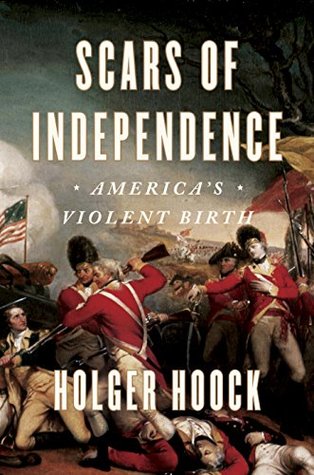More on this book
Kindle Notes & Highlights
by
Holger Hoock
Read between
February 25 - March 19, 2020
Bostonians remonstrated against the Stamp Act, which had imposed a new tax on every piece of printed paper.
Townshend Acts, which levied duties on imports such as glass, lead, and tea.
It did not help that among the troops were numerous Irish, and when the Afro-Caribbean drummers who served in the British regiments carried out disciplinary floggings of white soldiers on the Common, it offended Bostonians’ sense of the social and racial order.
Town leaders accused the British occupiers of a pattern of oppression and cruelty against innocent citizens that had climaxed in the deadliest confrontation thus far, what they quickly called the “bloody massacre.”
Boston, the paper reported, had witnessed “a most shocking Scene, the Blood of our Fellow Citizens running like Water thro’ King-Street, and the Merchants Exchange.”
As late as 1883, Sir John Seeley, the distinguished Cambridge historian of the British Empire, described the American Revolution as an embarrassing episode, “which we have tacitly agreed to mention as seldom as we can.”
Some committees relied quite explicitly on Liberty gangs—members of the Sons of Liberty, a militant group of artisans and laborers who had first formed in opposition to the Stamp Act a decade earlier—to extend the reach of their authority.
Patriots debased and defiled, humiliated and dehumanized, their Loyalist neighbors.
Dehumanizing the enemy was an approach that the Patriots would soon also use against the British and their German auxiliaries, those “orangotangs murdering brutes,” while a British officer denounced the rebels as “reptiles.”
As Loyalist associations crumbled, Patriot committees of safety and militias refined their methods of bullying and terrorizing their domestic enemies.
Patriots acknowledged that many women were in fact opinionated and politically active in their own right. After all, women sympathetic to the Revolution were taking on increasingly important roles.
Southern colonies were apparently starting to execute Loyalists.
At the same time, George’s sense of obligation towards his faithful Loyalist children became perhaps even more pronounced.
Newspapers, explains one historian, “united the colonies in a way that was beyond the ability of the jerry-built wartime government.”
British soldiers posed a danger not just to America’s soldiers on the battlefield but also to women in their own homes.
On February 6, 1778, representatives of the French monarchy and the American republic signed in secrecy (or so they thought) the treaties of commerce and of alliance.
American troops had an intense horror of bayonet attacks. This seemed to be in part because they were much less accustomed to bayonet combat than European armies of the time. The bayonet, the embodiment of British martial professionalism, was to Continental soldiers what the tomahawk and scalping knife were to many redcoats—a weapon of terror.13


